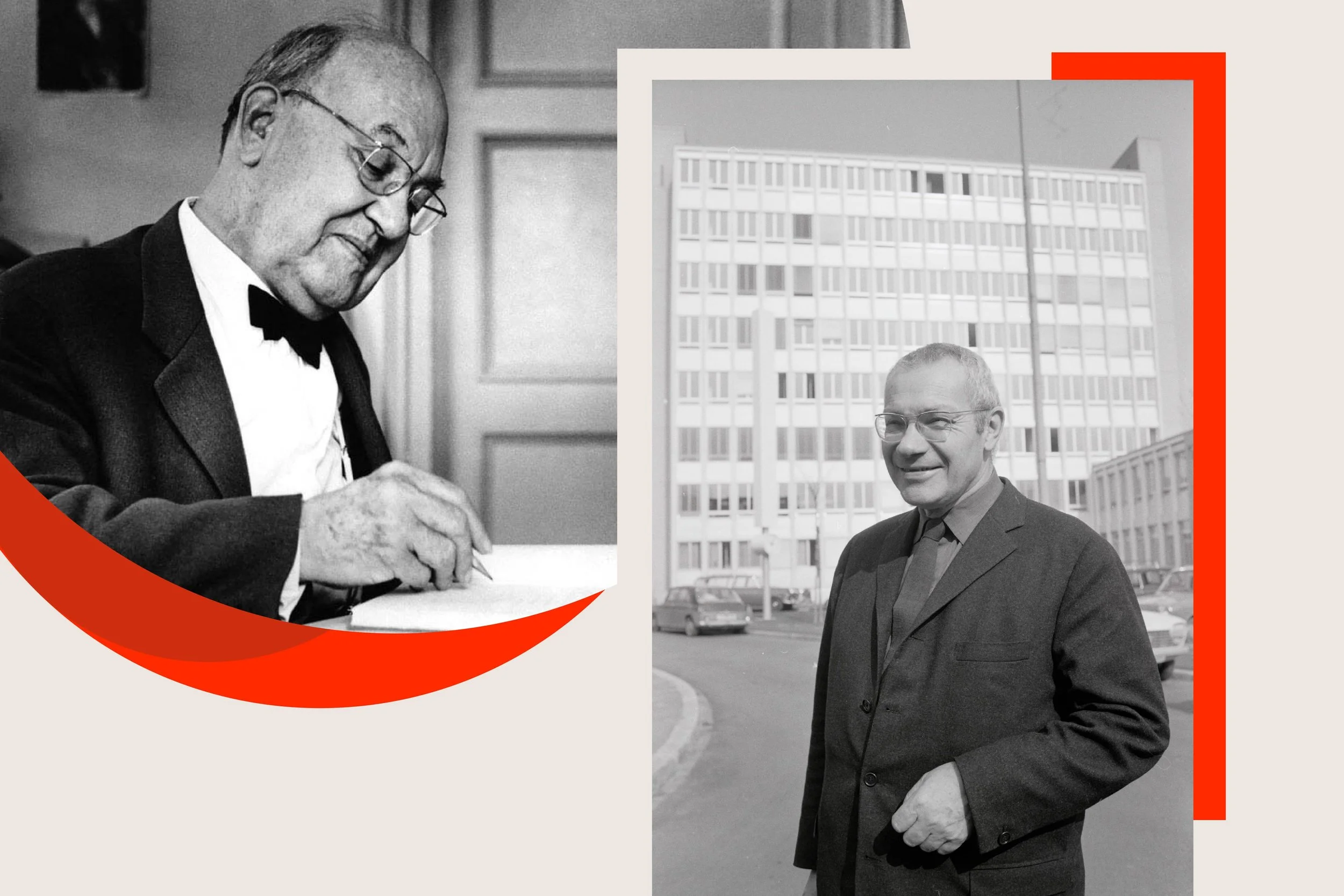Is ‘The dispute between Max Bill and Jan Tschichold of 1946’ relevant to graphic designers today?
Tschichold, born in 1902 in Leipzig, was the son of a talented calligrapher and under his father’s influence, he became immersed in the art of calligraphy and, later, typography. However, in 1925, he took a somewhat U-turn, publishing the ‘Elementaire Typographie’. This publication was Tschichold’s first organised advance in distancing emerging design from traditional practises and in favour of ‘Die Neue Typographie’, which translates to ‘The New Typography’, promoting function over aesthetics, later published in 1928. Bill was an avid follower of ‘Die Neue Typographie’ and Modernist design in practice and philosophy, renowned for popularising Swiss Graphic design and expanding the combination of mathematics and geometry to reflect Modernist and Constructivist principles.
Tschichold argued the exact typographic aim for printed matter should be logical, functional and correspond with its meaning, reflecting modern life. This led Tschichold and designers like himself, to prescribe the use of San Serif typefaces and geometric layouts to portray the rampant technological advancement of Europe. However, by 1933 with the Nazification of Germany, he reverted from his rigid typographic approach, realigning with traditional values. As a result, Bill lambasted Tschichold, insisting this reversal made him an ally of national socialism.
Example posters produced by Jan Tschicold during his era of Die Neue Typographie
Aside from the political context of this debate, the reason for questioning its relevance today is to discuss whether we as designers have a role to design for function — and as a by-product achieve aesthetics or if we can design solely for aesthetics and on the subjective basis of us thinking it ‘looks good’.
In response to this one may ascertain that the argument is weighted quite heavily one sided – this being that we should design for function primarily, however, function is subjective to each project and brief. For instance, functionality should be held paramount for a UX project as the user’s ability to interact with the design is crucial, especially in relation to accessibility. Although the function of an album cover or poster could have a much more abstract interpretation of function. Furthermore, the debate may not be as qualifiable for contemporary practices as the mediums in which design is used has changed dramatically and the subjectivity of form with it too. With this in mind, it almost doesn’t answer the question, however, one may assert that it is the role of the designer to use rationale and logic to interpret the best practice to achieve function for the context of the brief. As a result, this would lead to the most functional outcome, whereby the design serves the user but also carries the required aesthetic merit.
We’d love to know what you think! Let us know what your thoughts are!


